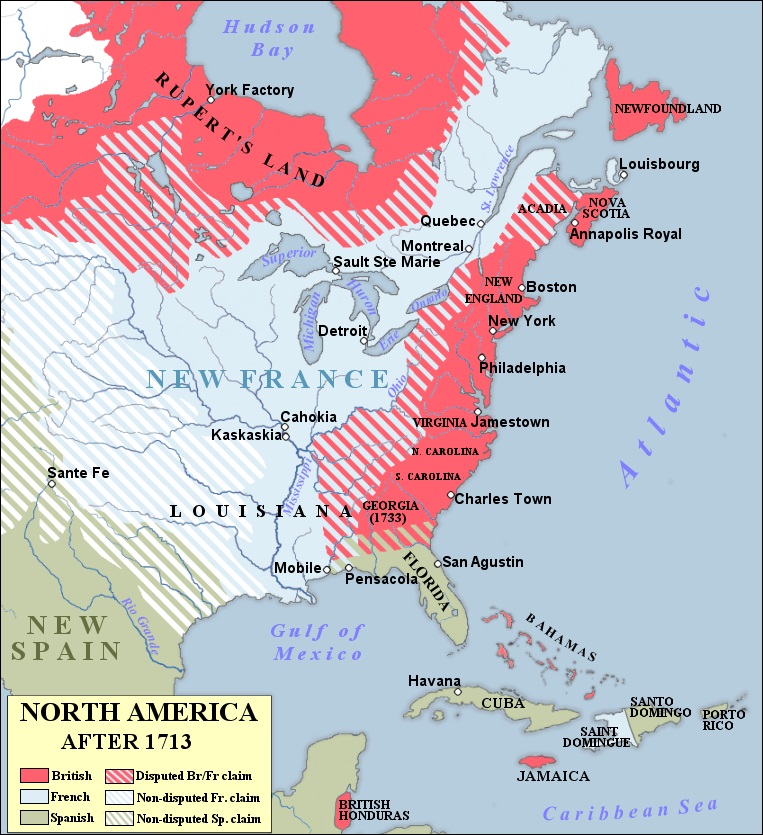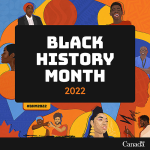
Lesson 1 by Jenna MacPhail
LESSON TITLE: What did British North America look like in 1713?
TIME: approximately 90 minutes
EXPECTATIONS
A3. Understanding Historical Context: Describe various significant events, developments, and people in Canada between 1713-1800, and explain their impact (FOCUS ON: Historical Significance; Cause & Consequence)
A3.1 Identify factors leading to some key events that occurred in and/or affected Canada between 1713 and 1800 and describe the historical significance of some of these events for different individuals, groups, and/or communities
A3.2 Identify key political and legal changes that occurred in and/or affected Canada during this period, and explain the impact of some of these changes on various individuals, groups, and/or communities
A3.3 Identify key social and economic changes that occurred in and/or affected Canada during this period, and explain the impact of some of these changes on various individuals, groups, and/or communities
A3.4 Describe some significant aspects of daily life among different groups living in Canada during this period
A3.5 Describe significant interactions between various individuals, groups, and institutions in Canada during this period
A3.6 Identify some significant individuals and groups in Canada during this period and explain their contribution to Canadian heritage and/or identity
SUCCESS CRITERIA STUDENTS WILL (with reference to Indigenous people):
- Identify the different groups that live in North America prior to 1713 (British, French, Acadian, Indigenous, Canadian)
- Identify where each group lived in North America at this time using the resources provided
- Understand that within a group of people there are different values and experiences that contribute to the make up and location of each group
- Understand that groups of people often have similar needs, but these can also differ depending on group culture and values. This will become apparent through the map activity as students start to learn where groups settled and why they may have settled there
- Needs of different groups can affect relations with others. This could lead to conflict, or alliances
ASSESSMENT
- Students will create a chart of important considerations for each “group”
- Formative assessment of student comprehension of multiple historical perspectives
- Students will work towards effective team work skills, and becoming a valued group member, through contribution, collaboration, and respect
PLANNING NOTES
- Class will begin with teacher asking students who they think lived in Canada at the beginning of the 18th Century. This can be used to gather prior knowledge from the students (Assessment for learning). If required, a teacher could create a K-W-L chart to assess where the students are at with their knowledge of this topic.
- Teacher will then confirm the main groups that were present at the beginning of the 18th century (we are specifically focusing on 1713 for this particular lesson).
- Students will be split into jigsaw groups of 3-4, and each group will be assigned a “group” (French, English, Acadian, Indigenous).
- Each group will be responsible with researching where these groups were living during the time period, using maps, websites, and primary and secondary sources (as provided by the teacher, or through their own internet and library research). They will then create a basic map using the template provided of their locations.
- After these jigsaw groups have completed their assignments, new groups will be formed, with one member from each original group. These teams will create comprehensive maps of British North America, portraying where each group was located, and what the map looked like in 1713.
PRIOR KNOWLEDGE REQUIRED (of STUDENTS):
- Students will need to have a basic understanding of how to read and understand a map, as well as basic knowledge about how to create their own map (this will be determined in as assessment for learning).
- Students will need to know and understand the following terms:
- New France
- Canadian
- Indigenous People
- Great Britain
- Acadian
- French
- Secondary sources
- Primary sources
ACCOMODATIONS/ MODIFICATIONS:
- Teacher will hand out materials that will assist with scaffolding research
- Visual learners will be supported through handouts, maps, and teacher Powerpoint presentation or anchor charts
- Kinesthetic learners are supported through the jigsaw grouping, as well as the popcorn question period at the end
- Auditory learners are supported through the teacher scaffolding each activity with questions out loud, as well as circulating the classroom
- Inquiry questions will be provided in order to assist every student with scaffolding their responses to group discussion
RESOURCES
http://www.militaryheritage.com/7yrsmaps.htm
https://web.archive.org/web/20150311101434/
https://www.republiquelibre.org/cousture/NVFR2.HTM
https://www.canadiangeographic.ca/mapping
TEACHING / LEARNING TASKS (APPROX. 90 minutes)
Action:
- Introduce students to North America at the dawn of the 18th century
- Assign each student their population group for the class
- Jigsaw activity to learn about each group for the unit
- Draw the initial map of North America in 1713
- Consolidate with wrap-up questions
Consolidation:
Popcorn style question (assessment as learning) – which groups were in a strong position in 1713? Why, or why not?
What similarities can be seen between where groups settled during this time period, and where they have settled now?
HOMEWORK
Assessment of learning: Students will need to write one paragraph (in a journal or blog format) about what they learned in class about who was present in British North America in 1713. To differentiate the assessment of learning, they also have the option to record their thoughts in an audio or video recording, to be submitted to the teacher.

